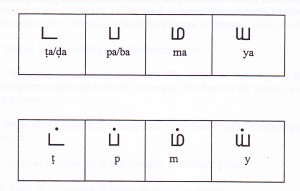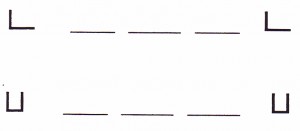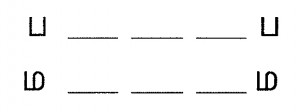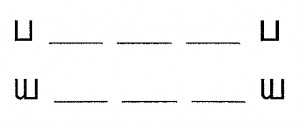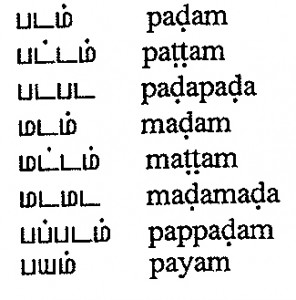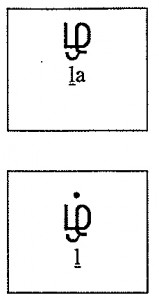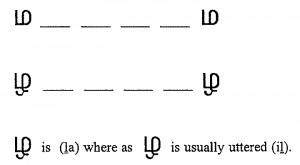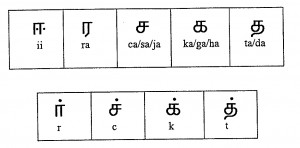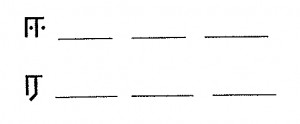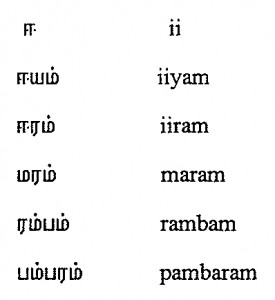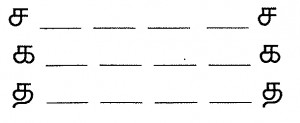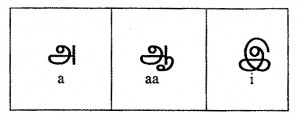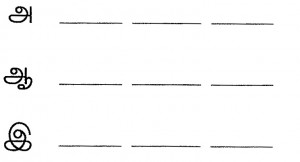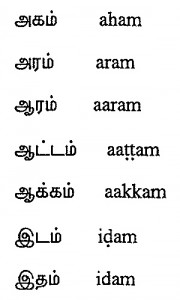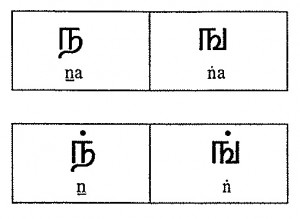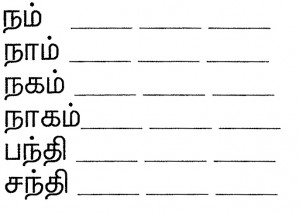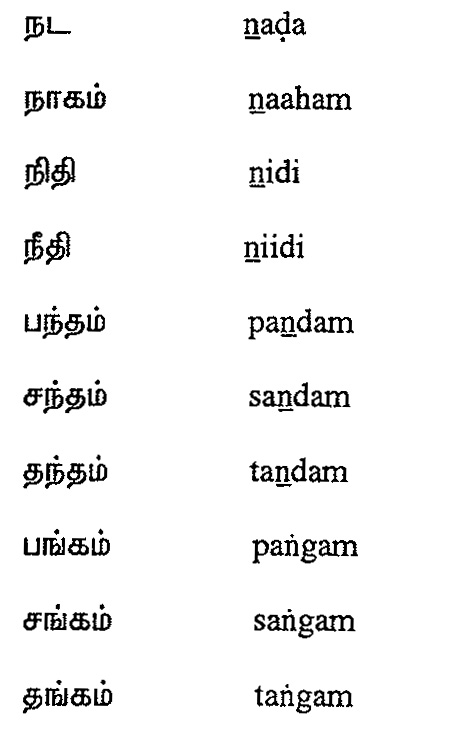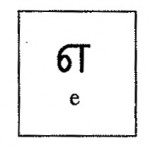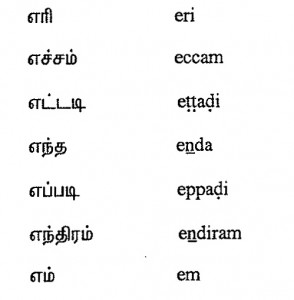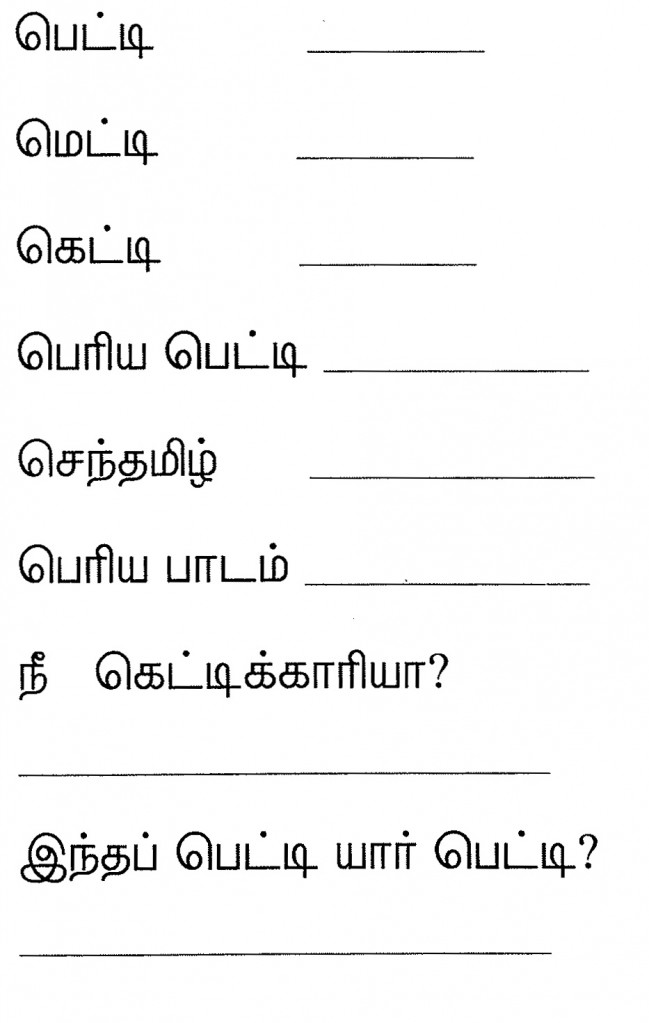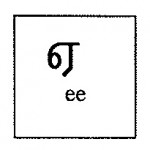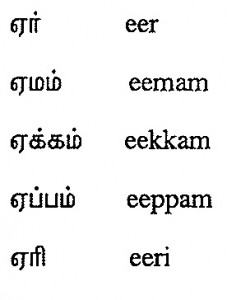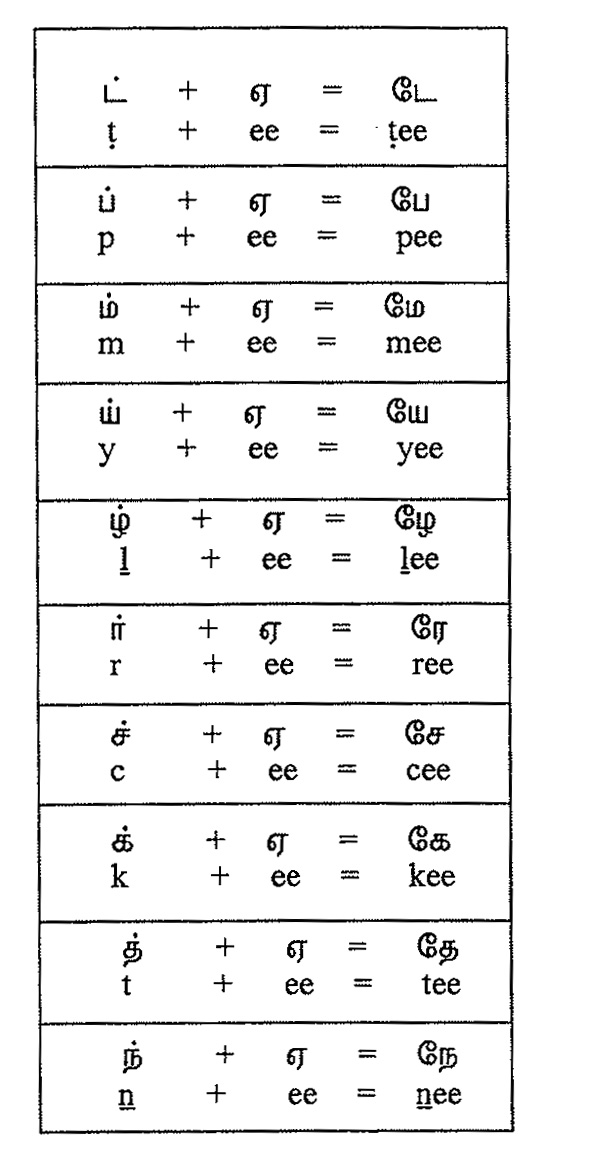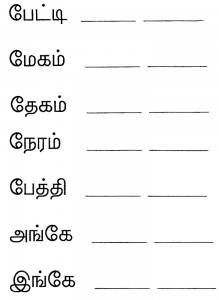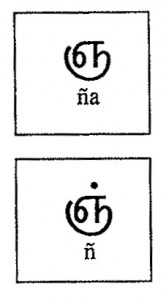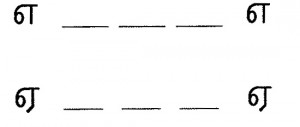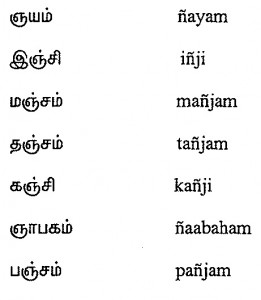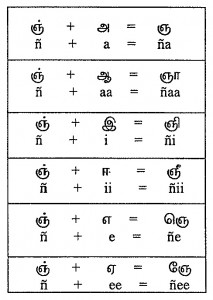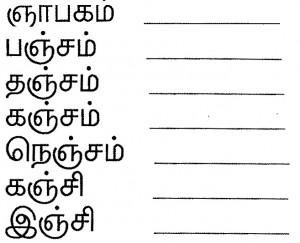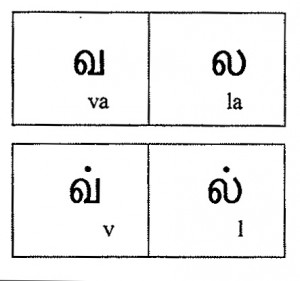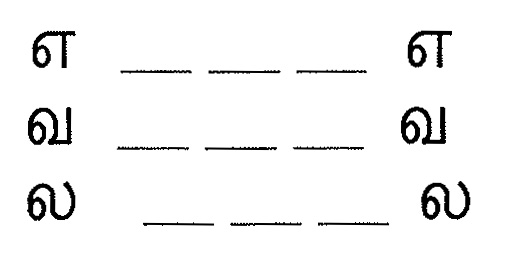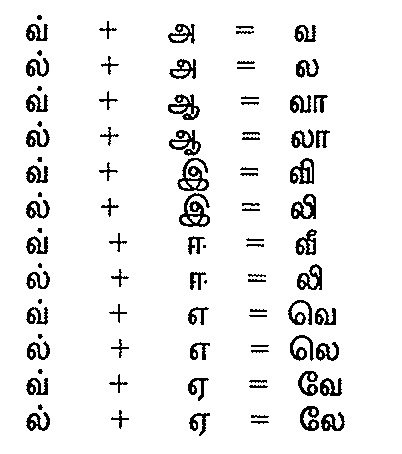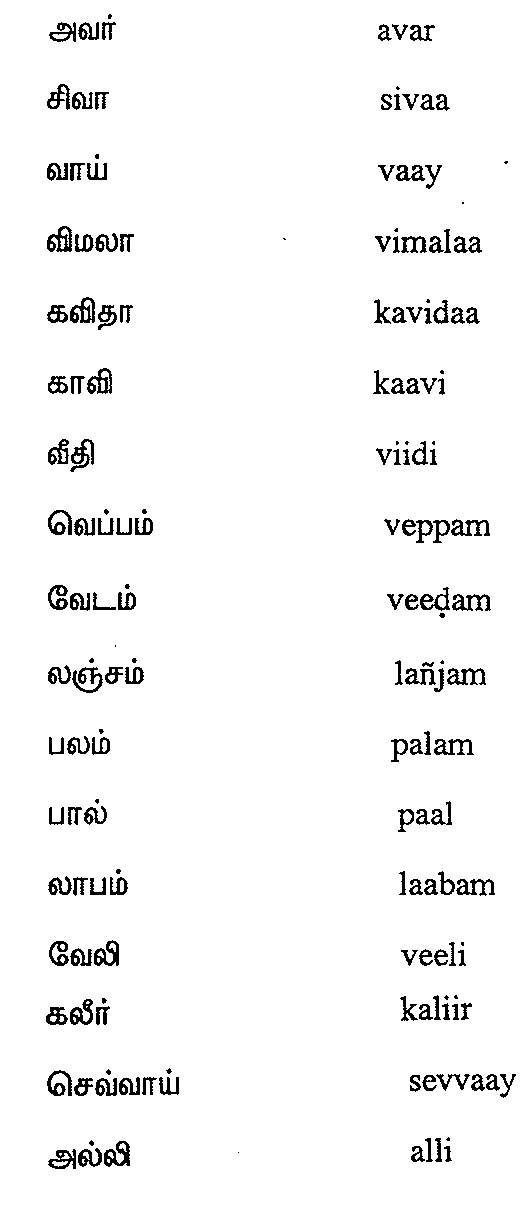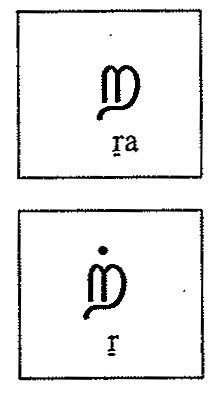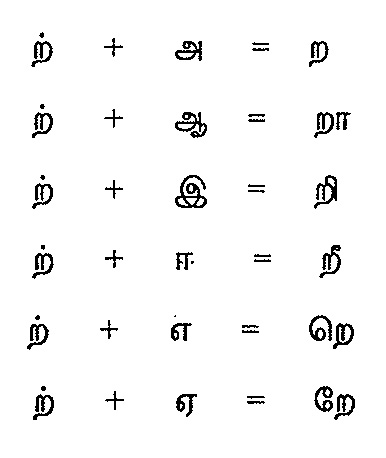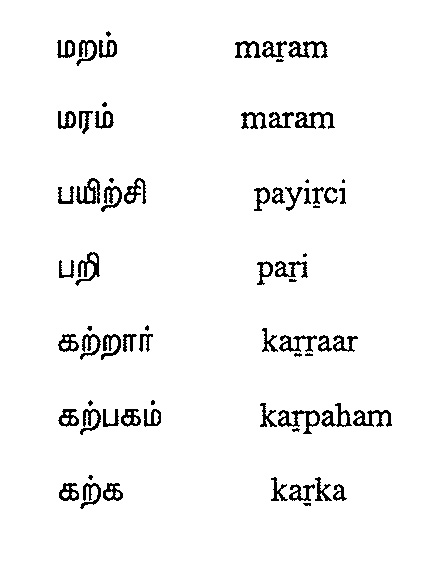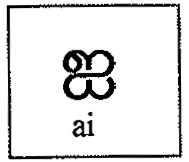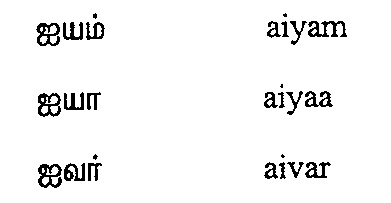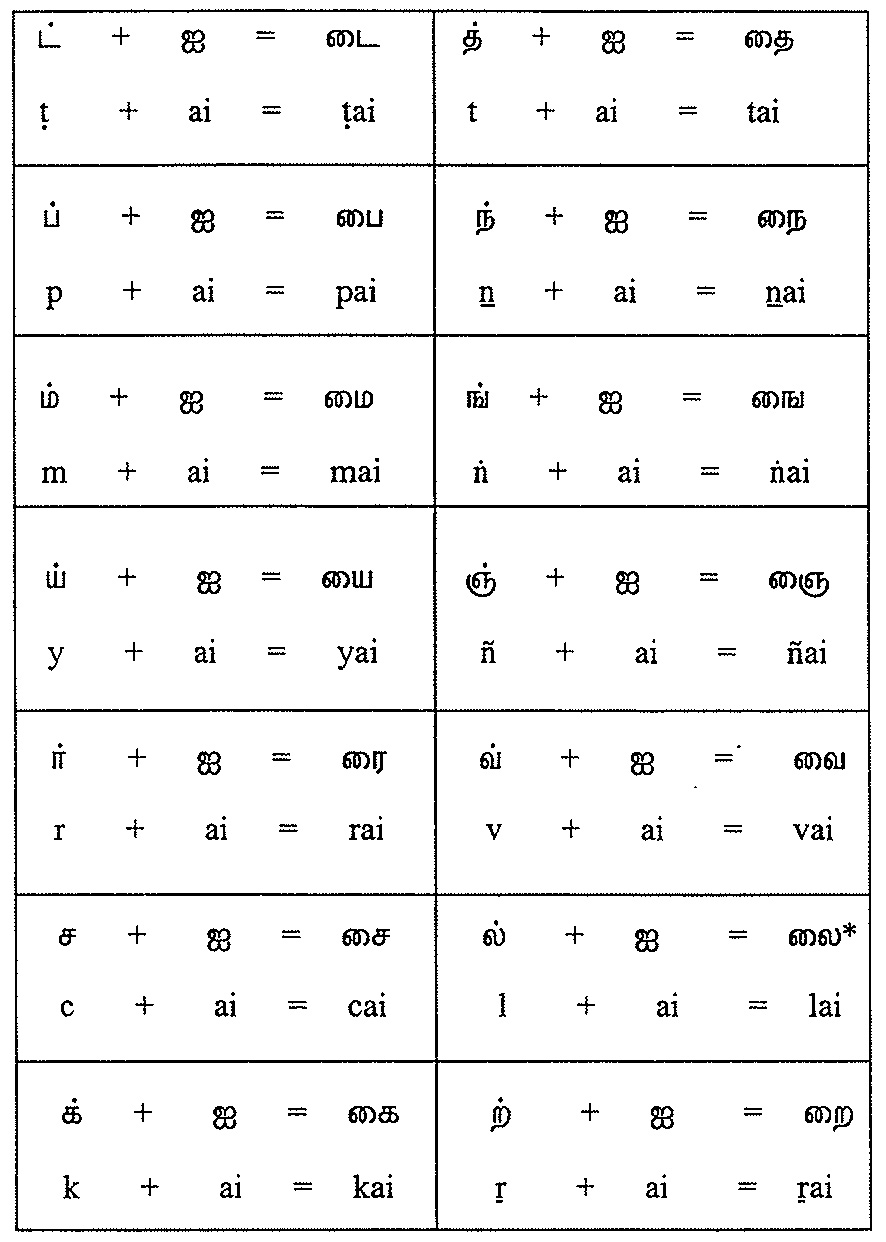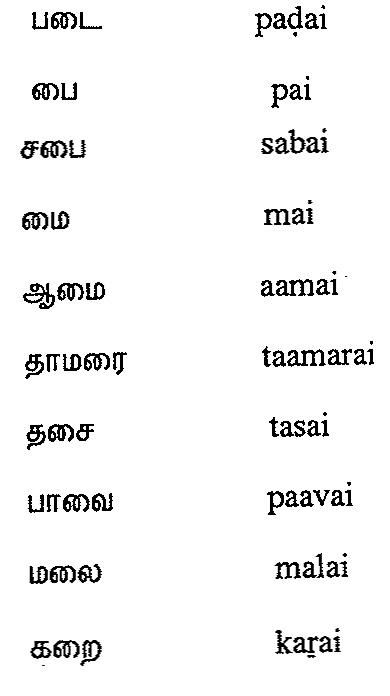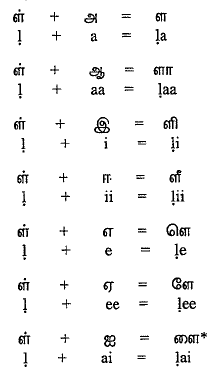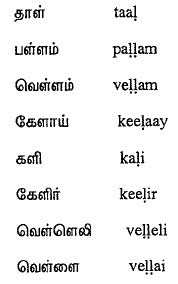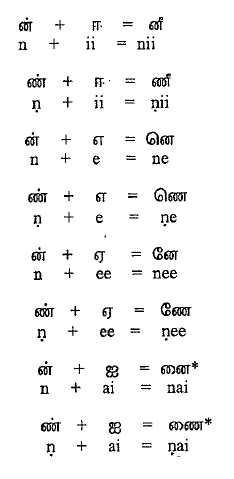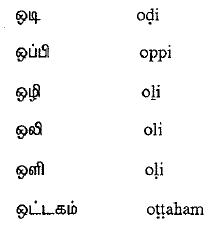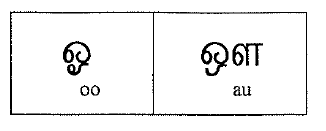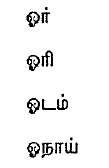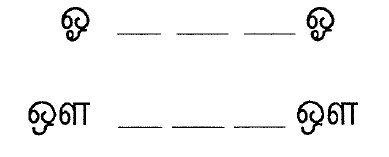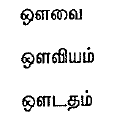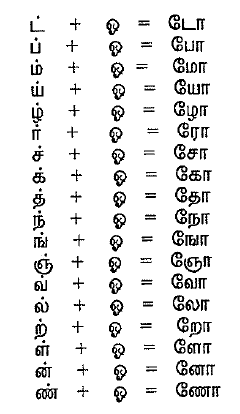The recorded history of the Tamil literature can be broadly grouped under seven periods. They are:
1. Sangam Period – 3rd Century BCE-2nd Century CE
2. Later Sangam Period – 2nd Century CE- 6th Century CE
3. Pallava Period – 6thCentury CE-9the Century CE
4. Chola Period – 9th Century CE-12th Century CE
5. Nayak Period – 3th Century CE-17th Century CE
6. European Period – 17th Century CE-19th Century CE
7. Present Period – 20th Century CE onwards
For our purposes, the Tamil literature may broadly be classified into:
(i) Sangam Classics
(ii) Bhakthi/Devotional Literature
(iii) Ethics, and
(iv) Modern Literature
(i) Sangam Classics
The early Tamil literatures are called Sangam literatures. Though there are controversies over the period of these classics, generally the period between 200 BCE and 500 AD is considered the period of Sangam. Sangam classics are mostly descriptive. They describe nature, human feelings, love lover, husband-wife relations, war, etc. Pathuppattu (pattuppaattu), an anthology of ten poems, and Ettuthokai (ettuttokai), a collection of eight anthologies, are two major Sangam classics. The following are known as Pathuppattu (pattuppaattu).
1. Thirumurukarruppadai (trirumurukaarruppatai)
2. Porunararruppadai (porunaraarruppatai)
3. Perumpanarruppadai (perumpaanaarruppatai)
4. Sirupanarruppadai (cirupaanaarruppatai)
5. Mullaippattu (mullaippaattu)
6. Maduraikanchi (maturaikkaanci)
7. Nedunalvadai (netunalvaatai)
8. Kurinchippattu (kurincippaattu)
9. Pattinappalai (pattinappaalai)
10. Malaipadukadam (malaipatukataam)
The following are known as Ettuthokai (ettuttokai).
1. Narrinai (narrinai)
2. Kurunthokai (kuruntokai)
3. Aynkurunuru (ayankurunu: ru)
4. Pathirruppathu (patirruppattu)
5. Paripadal (paripaatal)
6. Kalithokai (kalittokai)
7. Agananuru (akanaanuru)
8. Purananuru (puranaanuuru)
In addition to these, there is another set of poems known as Pathinenkizhkankku
(patinenkiilkanakku) which includes the following:
1. Naladiar (naalatiyaar)
2. Nanmanikkadikai (naanmanikkatikai)
3. Iniyavai Narpathu (iniyavai naarpatu)
4. Inna Narpathu (innaanaarpatu)
5. Kar Narpathu (kaar naarpatu)
6. Kalavazhi Narpathu (kalavali na: rpatu)
7. Thinaimozhi Aymathu (tinaimoli aimpatu)
8. Thinaimalai Nurrayamathu (tinaimaalai nuurraimpatu)
9. Aynthinai Aymathu (aintinai aimpatu)
10. Aynthinai Ezhu pthu (aintinai elupatu)
11. Thirikadugam (tirikatukam)
12. Thirukkural (tirukkural)
13. Asarkkovai (aacaarakkoovai)
14. Pazhamozhi Nanuru (palamoli naanuuru)
15. Sirupanjamulam (cirupanca muulam)
16. Mudumozhikkanci (mutumolikkaanci)
17. Elathi (eelaati)
18. Kaynnilai (kainnilai)
Many of the poems in this collection seem to belong to the post-Sangham age. It is
widely accepted that among these, Thirukkural was composed before the 2nd century CE. The Thirukkural consists of 1330 Kural (kural), which are short verses of seven words. Thiruvalluvar is the author of this book. This book consists of three major divisions, namely, Arathuppal (arattuppaal), Porutpal (porutpaal) and Inbathupal (inpattuppaal).
Arathupal deals with family life and ascetic life, which are called Illaram and Turavaram respectively. Perhaps this could be somewhat equated with the Sanskrit division Dharma.
Porutpal deals with the rulers and the ruled and all the other aspects relevant to them. Perhaps this could be equated with the Sanskrit division Artha.
Inbathuppal deals with love both premarital and extramarital. In short, Thirukkural is a very good guide for life and an excellent literary work to enjoy. This book has been translated into many Indian and foreign languages.
The famous Tamil work Silappathikaram (cilappatikaaram) belong to the later Sangam period. Saint Ilango, a Chera prince, wrote this epic. Silappathikaram is the story of a chaste woman, by name Kannaki. All Tamils know the story of Kannaki. The author, Ilango, says in the prologue that the work is based on the truth that (i) a chaste woman is worthy of worship even by great people, (ii) the Aram (Dharma) becomes the destroyer of the kings who do injustice and (iii) the fate inevitably makes one to suffer the effect of one’s own actions. There is another epic known as Manimekalai (manimeekalai) by Sathnar, a contemporary of Saint Ilango. These two epics are known together as ‘Twin Epics’.
(ii) Bhakthi/Devotional Literature
Bhakthi literature deals with religious philosophy, the history of saints, etc. Most of these
are devotional poems. Religious teaching is found to have entered Tamil literature, for the first time in Manimekalai. Sathanar the author of this book believed in Buddhism. The philosophy of Buddha is extensively discussed in Manimekalai.
After the 7th century CE, there was an acute fight between Saivites and Jains as well as Saivites and Buddhists. The Nayanmars (naayanmaarkal), the saints of Saivism, took much pain to spread and establish their religion all over Tamil Nadu. They were, to a great extent, successful in their attempt. Saivism as well as Vaishnavism clashed with Jainism and Buddhism. Consequently Jainism and Buddhism lost their ground in Tamil Nadu. Jains, Saivites, and Vaishnavites extensively use the medium of literature for the propagation of their religions. Sivagasinthamani (ciivakacintaamani) is the outstanding work of Jains. Kambaramayanam (kamparaamaayanam) is the most celebrated work of Vaishnavites. Thiruvasakam (tiruvaacakam) is one of the most popular Saiva Bhakthi songs. Apart from these, there are many works for various religious groups.
(iii) Ethics
The major part of Thirukkural deals with morals. Literature was chosen as the best instrument to teach morals. The poetic works Naladiar (naalatiyaar), Nanmanikkadikai (naanmanikkatikai), Elathi (eelaati), Sirupancamulam (cirupancamuulam), Athiccudi (aatticuuti), Konraiventhan (konraiveentan), etc., are very popular in Tamil Nadu. Many memorize the verses of these works.
(iv) Modern Literature
Modern literature must be dealt with fewer than two headings:
(1) Prose and (2) Poetry.
It may be noted that prose writings have gained more popularity in this century. Prose style is chosen as a better medium for novels, short stories, essays, etc.
Prose: Prose literature may be generally classified into
two components: (1) Novels and (2) Short stories.
Novels
The first novel published in Tamil was Prathaba Mudaliar Sarithiram (Pirataapa mutaliaaar carittiram). Vedanayagam Pillai who lived in the 19th century wrote this novel. Now there are a number of novels in Tamil. Among the recent novelists Akilan, N. Parthasarathi, Jayagandhan, Sandilyan Ashoka Mitram and others are eminent writers. Mu. Varadarajan’s Kallo Kaviyamo (kallookaaviyamoo), Nencil Oru Mul (nencil oru mul) and Akal Vilakku (akal vilakku), Akilan’s Pavvai Vilakku (paavai vilakku) and Nencin Alikal (nencin alaikal). Parthasarathi’s Kurincimalar (kurincimalar) and Ponvilangu (ponvilanku), Sandilyan’s Yavana Rani (yavana raani), Kadal Pura (katalpura) and Raja Muthirai (raajamuttirai), etc, are excellent works in the sphere of Tamil novels. Also Akilan received the ‘Gnana Peeth’ award for his novel, Sithirappavai (cittirappaavai).
Short Stories
Jayakantan is one of the eminent and popular storywriters in Tamil. He is not only a storywriter, but also a novelist. His novels Parisukkupo (paaricukkup poo), Vazhkai Azhaikkiratu (vaalkkai alaikkiratu), etc., are worth reading. Among his novels, Akkinippiravesam (akkinip piraveecam) are extremely good. Another storywriter who deserves our appreciation is R. Sutamani. She has written many stories among which Unam (uunam) stands unique. Jayasirpiyan, Sundara Ramasamy, A. Madhavan, Ashoka Mithiran, Navabharathi P. Pukazhenthi, Puvai S. Arumugam and others are well known writers in the field of Tamil short story writing.
Apart from these stories, there are a number of stories published in several weekly and monthly magazines. Kumudam (kumutam), Anandha Vikadan (aanantavikatan), Kalaimagal (kalaimakal) Kalki (kalki), Tiipam (tiipam), Kungumam (kunkumam), Taay (taay), Minnambalam (minnampalam) and several others are the journals that give primary importance to stories.
Poetry
The late poet Subramanya Bharathi started a new era in the history of poetry. He used poetry as an instrument to arouse patriotism and he was successful in this to a great extent. His poetry went not only to the hands of scholars but also to the hands of common people. The complete works of Bharati were published under the title Bharathiyar Kavithaikal (paaratiyaar Kavitaikal). Among his works Kannan Pattu (kannan paattu), Kuyil Pattu (kuyil Paattu) and Panchali Sabadham (paancaali capatam) are outstanding.
Another poet late Bharathidhasan, the beloved follower of Bharathi, is the most celebrated and outstanding poet in Tamil Nadu. He followed Bharati in making poetry very popular and in using it as the best instrument to inspire people. But he deviated from Bharati in many respects. Bharati believed in God but Bharathidhasan did not. While Bharati was preoccupied by the problems of the freedom struggle and other national interests, Bharathidhasan was particular in the development of the Tamil Nadu, Tamil language, Tamil people and Tamil culture. Among his literary works, Pandiyan Parisu (paantiyan paricu), Kudumba Vilakku (kutumpa vilakku) Tamil Ilakkam (Tamil iyakkam) and Azhakin Sirippu (alakin cirippu) are highly valuable.
Besides these two poets, Kannadhasan, Abddul Razan, Vairamuthu, Mudiyarasan, Surada, Tamizh Azhagan, K. C. S. Arunachalam, Ponnadiyan, and Mu enrich the field of Tamil poetry. Metha and others. Kannadhasan’s Attanathi Athimanthi (aattanatti aatimanti) and Mangani (maankani) and Mudiyarasan’s Pungodi (puunkoti) are excellent works. Sudhanantha Bharathi is a living poet in Tamil Nadu. Sri Armband influences him. His work Bharatha Sakthi (baarata cakti) is very famous. This book won the Raja Rajan Award of one lakh rupees. This award was given by Tamil University, Tanjore.
Besides these works, there are a number of anthologies of poems published in this century. Several poems are being published in weekly and monthly magazines. Mullaicaram (mullaiccaram), Kavidhai (kavitai) and a few other journals give primary importance to poetry.
In this connection, mention should be made about the new or modern poetry. The modern poets, Pichaimurthi Mani Vaidheswaran and others are interested in modern poetries. They are of the opinion that Tamils literary field needs new experiments and new developments and they believe that their attempt may contribute something to the Tamil literary field.
TAMIL GRAMMATICAL TRADITIONS
In general, grammar includes phonology, morphology and syntax. But the Tamil tradition seems to differ from this. The earliest grammar Tholkappiyam (tolkaappiyam) deals no only with phonology, morphology and syntax but also with personal and impersonal, internal and external aspects of life, literary beauties, behavioral aspects of human life, Tamil linguistic traditions, etc., and this portion is termed Porulathikaram (porulatikaaram).
According to the tradition that Tholkappiyar followed a grammar is three folded (1) Ezhuthu (eluttatikaaram), sounds and letters (2) Col. (collatikaaram), words (3) Porul (porulatikaaram), meaning.
Later on new traditions came in. According to the new tradition, a grammar is five folded: (1) Ezhuthu (eluttu), (2) Col (col), (3) Porul (porul), (4) Yappu (yaappu), versification, and (5) Ani (ani), literary beauties).
Tholkappiyam:
Tholkappiyam (tolkaapiyam), the earliest grammar available in Tamil deals with phonology and morphophonemics in the firs part known as eluttatikaaram. It deals with morphology and syntax in the second part known as collatikaaram. In the third part known as Porulatikaaram, it deals with the subject matter of literature, some literary and linguistic traditions, etc. This grammar is considered to be written in the early pre-Christian era.
Nannul (nannuul): Next to Tholkappiyam, Nannul is the outstanding work in the field of Tamil grammars. Saint Pavananti who lived around the 13th century CE wrote this grammar. This grammar contains only Ezhuthu and Col. The first chapter Ezhuthu deals with phonology and morphophonemics and the second chapter Col deals with morphology and syntax.
